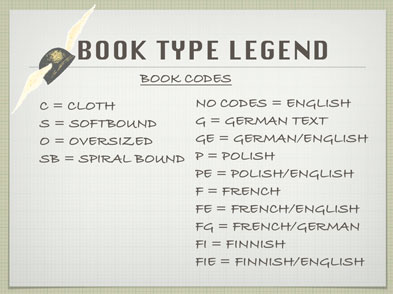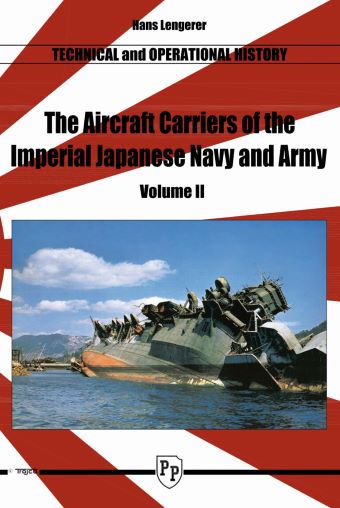
PRODUCT SEARCH
Free Shipping on orders of 8 or more books.
Applies to US Shipments only.
|
Shopping cart is empty.
|
THE AIRCRAFT CARRIERS OF THE IMPERIAL JAPANESE NAVY AND ARMY VOLUME 2
Book Type: C,O by Hans Lengerer, 687 pages, 391 photos, 378 line drawings, 144 tables Although the Japanese had already built up a strong carrier weapon before World War II, they initially still relied on battleships as the hard core of their fleet. Only as the war progressed did they also had to learn to give the aircraft carrier priority in naval warfare, following the American model. They tried more and more desperately to counter America’s concentrated industrial power with enough Japanese aircraft carriers and resorted to every means available. How they did it is what this volume is about. While the Japanese – similar to the battleships (Yamato class!) – initially focused on class rather than mass when it came to aircraft carriers, the American enemy’s mass construction forced them to counteract. Mass production of the medium-sized aircraft carrier began in Japan with the Unryu class. However, given the weaker Japanese industry, this did not meet the requirements. With the – unfinished – conversion of the CA Ibuki into the simplified CVL Ibuki type, an interim solution was sought. Additionally,the idea originated to convert suitable merchant and military auxiliary ships into urgently needed aircraft carriers, thus achieving the goal more quickly than with purely new constructions. The first step was to convert five light aircraft carriers from other warship or auxiliary warship classes. The next step was to convert the civilian express steamers Junyo and Hiyo into (technically) auxiliary aircraft carriers, but intended for use as regular aircraft carriers. Since the process was sufficiently proven from the Japanese perspective and enabled the rapid addition of additional carriers, another five passenger ships were converted into auxiliary aircraft carriers – three of the Taiyo class (Taiyo, Unyo, Chuyo) and the individual ships Kaiyo and Shinyo. In the late phase of the Pacific War, when Japanese ship losses due to enemy aircraft and submarines increased, efforts were made to counteract this by building escort aircraft carriers – classified as “special aircraft carriers”. Some of these ships were subordinated to the army (sic), as their task was seen as supporting landing companies. However, due to the already very limited resources (raw materials, skilled workers), the construction program got stuck halfway. These aircraft carriers formed the core of the carrier fleet that fought the major naval battles of the second phase of the war: the Second Battle of the Eastern Solomons; the South Pacific Naval Battle, an attempt to retake the island of Guadalcanal in October 1942; the so-called A and B operations in 1943; the Battle of the Mariana Islands (also: Battle of the Philippine Sea) in June 1944, the largest carrier battle in history, in which the Japanese carrier-based air units were severely decimated; the Battle of Cape Engano in October 1944, which effectively marked the end of the Japanese carrier weapon; and as a sequel and final chord, the destruction of the floating anti-aircraft batteries, the “aircraft carriers without wings,” in 1945. But this volume is not only dedicated to the actual ship technology and the related history of naval warfare. It also offers background knowledge for understanding them – useful information about the machinery, armament and equipment of the aircraft carriers: anti-aircraft guns, machine guns, fire control devices, rocket launchers, radar, underwater listening devices, sonar. A separate chapter is devoted to carrier aircraft: aircraft types from fabric-covered biplanes to all-metal low-wing aircraft with retractable landing gear, machines from such famous manufacturers as Mitsubishi, Nakajima or Aichi, single-seater fighters (including the legendary “Zero”), torpedo bombers, dive bombers and reconnaissance planes, gyrocopters, Fieseler “Storch” copies and so on… There is also image-text information about the on-board weapons: MG and MK, bombs and air torpedoes. Finally, there is a detailed and justified technical assessment of the Japanese aircraft carriers of this phase of the war and their components: rivets and welds, torpedo bulkheads (too thin) and flight decks (unstable), damage control and fire extinguishing systems, emergency flooding and bilge systems, dangers from aviation fuel systems and countermeasures , measures against the failure of the rowing machines, incomplete transfer of physical laws into mechanical devices… All technical advantages and (especially) weaknesses are analyzed in detail and the judgment is comprehensibly justified. At the same time, it becomes clear to what extent and in what way the Japanese learned from battle damage and tried to eliminate future sources of danger. This book is one of the most detailed and complete works on this topic! Contents of Volume 2: Chapter 7: Unryû class: Mass Production of the Medium-sized Aircraft Carrier Chapter 8: Incomplete Conversion of CA Ibuki into Spartan Type CVL Ibuki Chapter 9: Five Light Aircraft Carriers Converted from Other Warship or Auxiliary Ship-Types Chapter 10: Junyô and Hiyô Conversion of Large-Sized Excellent Passenger Ships into Auxiliary Aircraft Carriers but Operated as Regular CVs Chapter 11: Five Auxiliary Aircraft Carriers Converted from Excellent Passenger Ships Chapter 12: Particular Aircraft Carriers of the Imperial Japanese Army and the Navy Chapter 13: Machinery Chapter 14: Overview of the Carrier-Based Aircraft and Their Weapons (MGs, bombs, torpedoes) Chapter 15: Short Survey on Weapons and Equipment (HAGs, MGs, FCSs, Rocket Launcher, Radar, Hypodrome, Sonar) Chapter 16: The Second Solomon Sea Battle (August 1942) Chapter 17: South Pacific Sea Battle – An Attempt to Recapture Guadalcanal Island (October 1942) Chapter 18: I Gô and Rô Gô Operations in 1943 Chapter 19: Mariana Sea Battle (June 1944) – Incredible Decimation of the Carrier-Based Air Force Chapter 20: The Battle off of Cape Engano (October 1944) – The End of the Japanese Carrier Force Chapter 21: Aircraft Carriers Without Wings – The Annihilation of the Floating AA-Batteries in 1945 Chapter 22: Technical Evaluation of the Japanese Aircraft Carriers 
|


